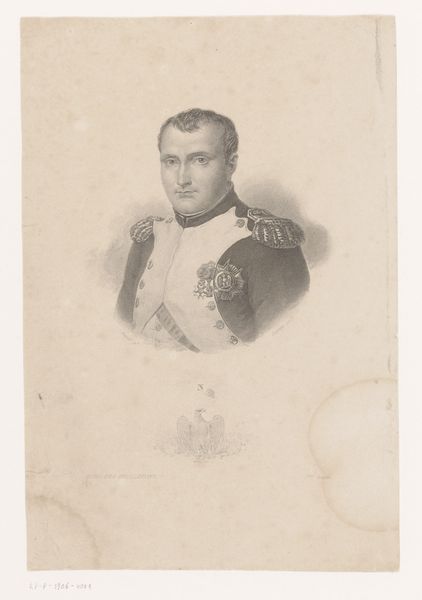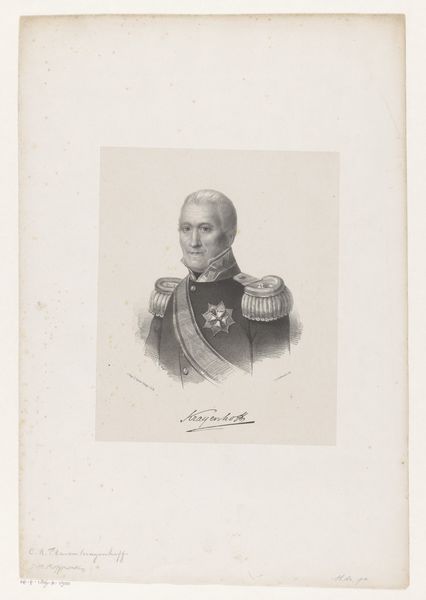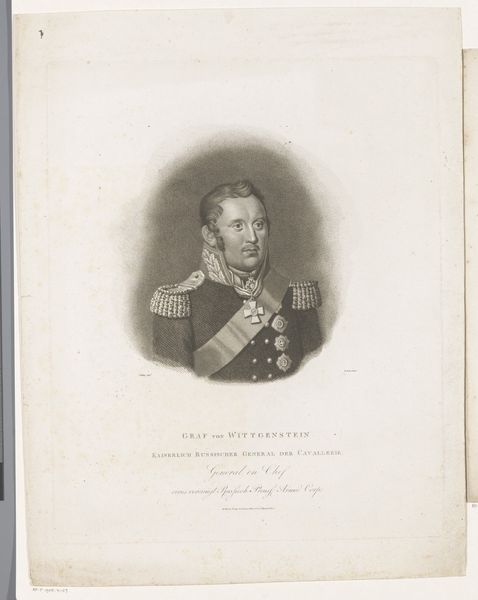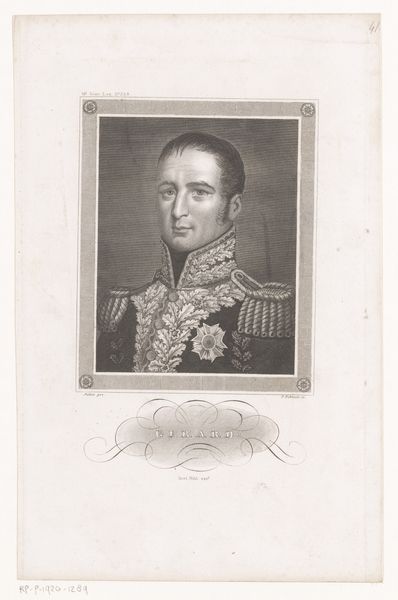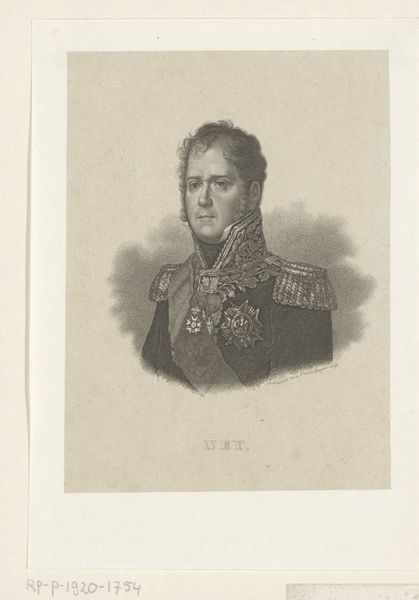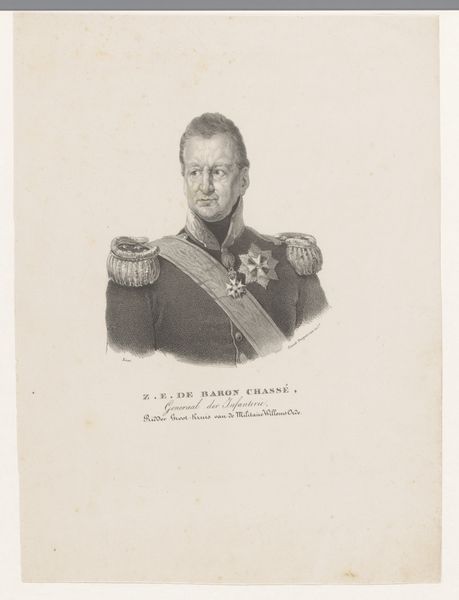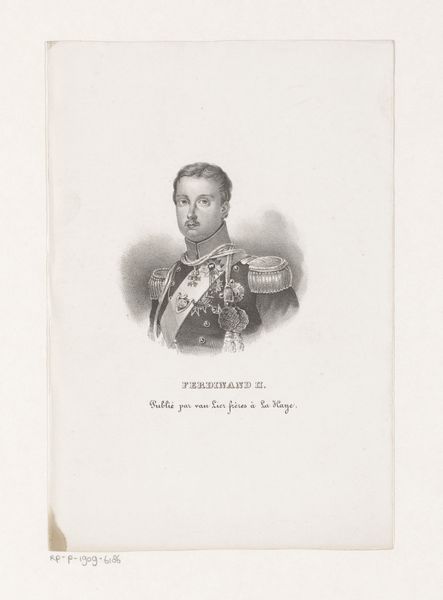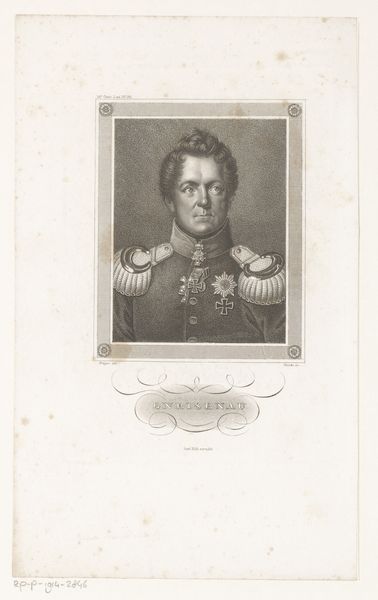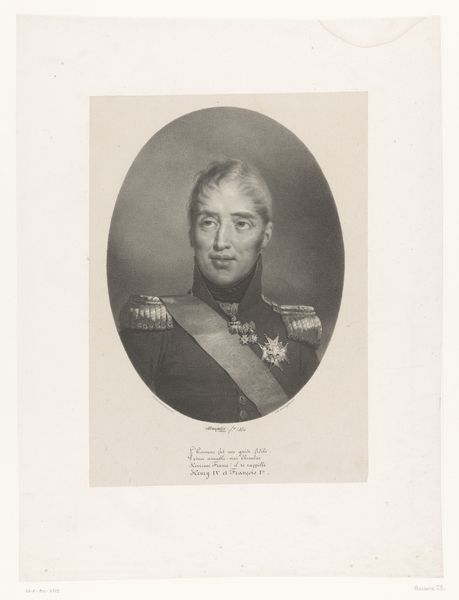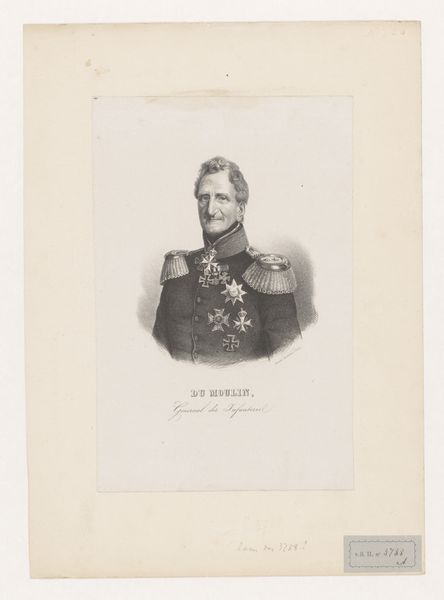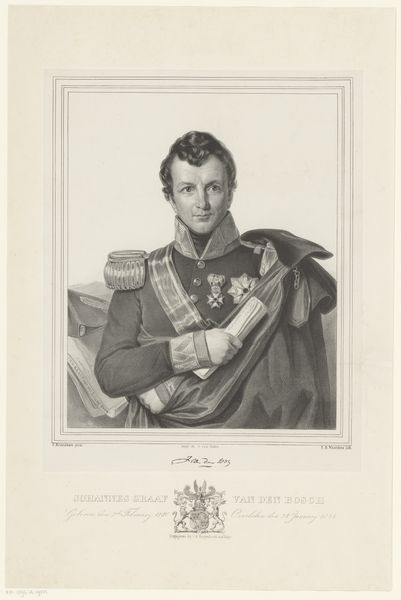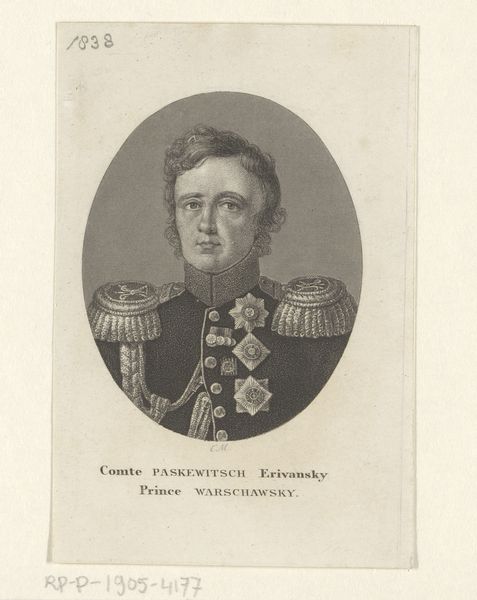
print, engraving
#
portrait
#
pencil drawn
#
yellowing
#
neoclacissism
#
light pencil work
# print
#
pencil sketch
#
charcoal drawing
#
pencil drawing
#
history-painting
#
engraving
Dimensions: height 427 mm, width 323 mm
Copyright: Rijks Museum: Open Domain
Editor: Here we have a portrait of Napoleon Bonaparte, created in 1827 by Achille Désiré Lefèvre. It appears to be an engraving, a print of some kind. There's a fragility to it; the lines are so delicate. What stands out to you in this work? Curator: What strikes me is the technical process involved in reproducing this image of power. Look at the lines—engraving, printmaking—these are mechanical means. Power isn't just portrayed; it's manufactured, disseminated through these processes. Consider the labor involved in creating the copper plate. The artist isn’t just expressing themselves, they’re operating within a system of production, fulfilling a demand for images of Napoleon. Does the method of dissemination undermine the grandeur it seeks to convey, or does it amplify it? Editor: That's a compelling way to look at it. I was focusing on Napoleon himself, but the method of creating the portrait almost democratizes his image. Suddenly, his face isn't just for the elite; it could be for anyone with access to a print. Curator: Exactly! And that access is controlled, influenced by economics and social structures. Who could afford it? What did this availability do to his persona? Furthermore, prints can be easily transported – how does this change its meaning in other geopolitical contexts? What implications might this have during the time of production in 1827? Editor: So it’s not just about *who* Napoleon was, but about how the *means* of producing his image shaped his legacy? I hadn't considered the economics of portraiture at the time. Curator: Precisely. The print’s materiality connects us directly to the socio-economic factors underpinning Napoleon's enduring image. It serves as a record of his image in the broader culture. Editor: It makes you rethink the relationship between art and power. Thanks, that was insightful.
Comments
No comments
Be the first to comment and join the conversation on the ultimate creative platform.
